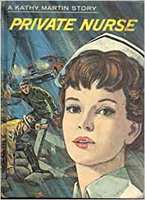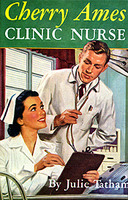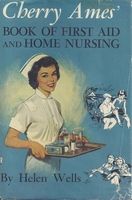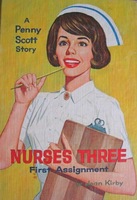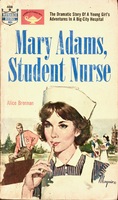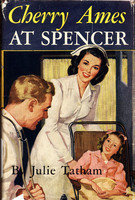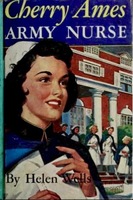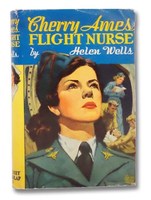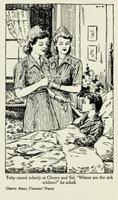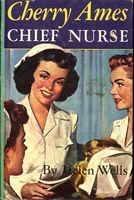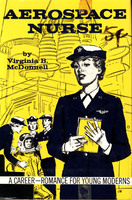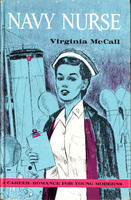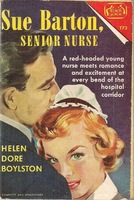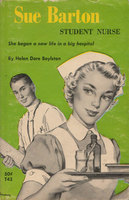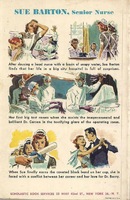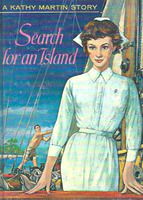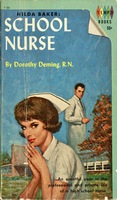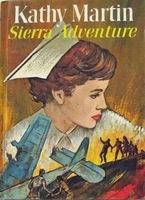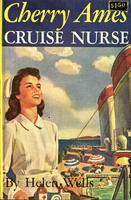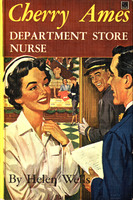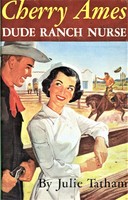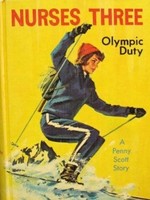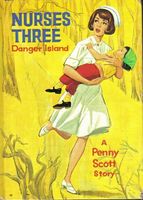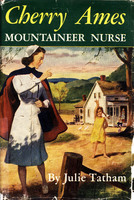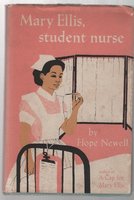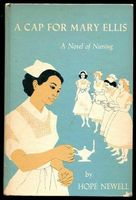Career Romances for Younger Readers
During the 1930s career novels for young readers emerged as a widely popular genre—the nurse career novel was marketed to young girls and dominated the genre. Numerous series emerged: Sue Barton, Cherry Ames, Kathy Martin, and Penny Scott were just a few! Career nurse romances remained popular and published new titles through the sixties.
These nurse series were written for an adolescent female audience with an aim to explain different pathways of a nursing career while providing a model of the ideal nurse. They featured young female nurses enjoying adventure and finding meaning in their lives as they travelled the world as nurses. The protagonists are remarkably independent and career-centric—they defer romance for nursing. Their womanhood is so de-emphasized, however, that they seem to signal that the higher calling of nursing would require sacrificing a life as a woman, wife, or mother. No wonder, then, that adult nurse romance novels so often featured protagonists who must learn to reconcile their identity as a nurse with their identity as a woman!
Despite representing nursing as a career that limited romantic opportunities, the tales of adventurous world travel inspired countless young women to join the profession.
Click the images below to open up a lightbox gallery of more titles, images, and quotes!
Military Service and Nursing
During war years, protagonists of nurse career novels modelled selflessness, patriotism, honesty, and dedication to work as they eagerly responded to the country's call to join the Army and Navy Nurse Corps. Career romances echoed the messages put forth by American homefront propoganda during World War II; they called young women to take up nursing, portraying it as the ideal profession for adventurous and independent women. It is not surprising that nurse career novels became some of the most popular series as American society urged women to take up nursing through and after the war.
Tension Between Self-Sufficiency and Romance
Like the adult nurse romance novels, career nurse stories also featured themes of young women learning to navigate both their desire to be independent, self-sufficient, and career-oriented with the desire for romance!
Travel, Fun, and Adventure
Nurse career series saw their protagonists working in a different clinic or setting with each novel. Some of these sought to portray the various types of nursing with accuracy and demonstrate what sorts of tasks and skills would be needed. But many of them also took their protagonist to fun and unlikely settings to provide more adventure and intrigue. Much like the adult nurse romance novels, these stories let readers experience, live, and travel vicariously through the protagonist.
Race Matters
Nurse career stories for young adults featured African American nurses earlier than the nurse romance novels for adults, which didn't introduce protagonists of color until the late sixties.
Critical Thinking Prompts:
-
How does popular children’s fiction participate in socializing children according to cultural values?
-
Is juvenile fiction powerful enough to influence professional or social trends?
-
Do you think career stories encouraged or challenged gender or racial ideologies?
-
Why might children's fiction have adopted racially diverse characters earlier than adult fiction?
-
Are there ethical concerns in regards to children's fiction promoting nationalism, military service, or homefront war efforts?
-
Is the nature and content of children's fiction today different than it was in the past? Can you think of examples of young adult books today that could provide a comparison for investigating issues like the representation of gender roles, race, or patriotism?

